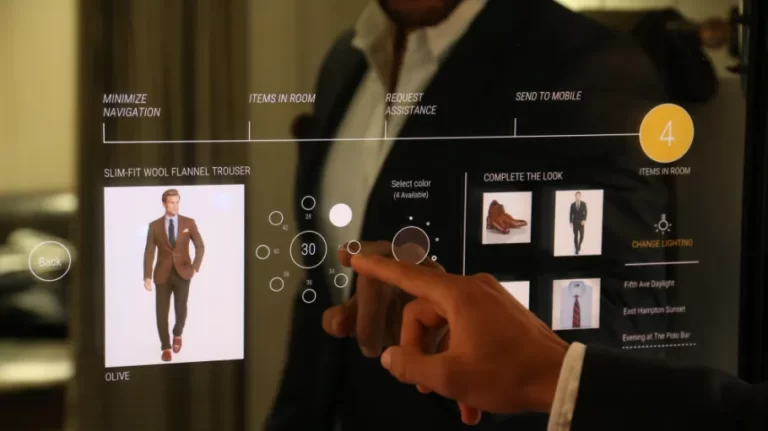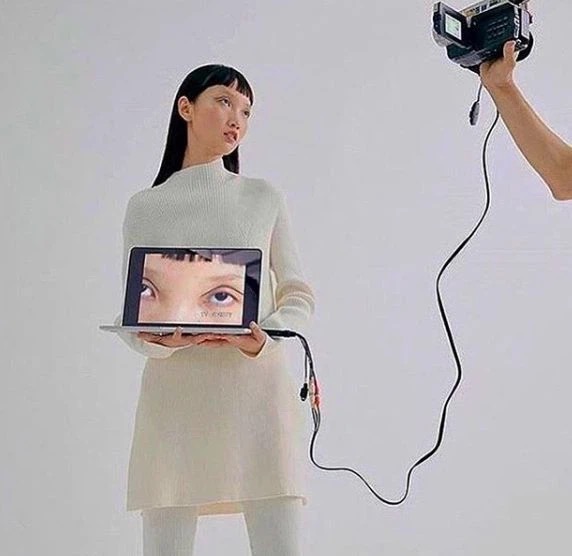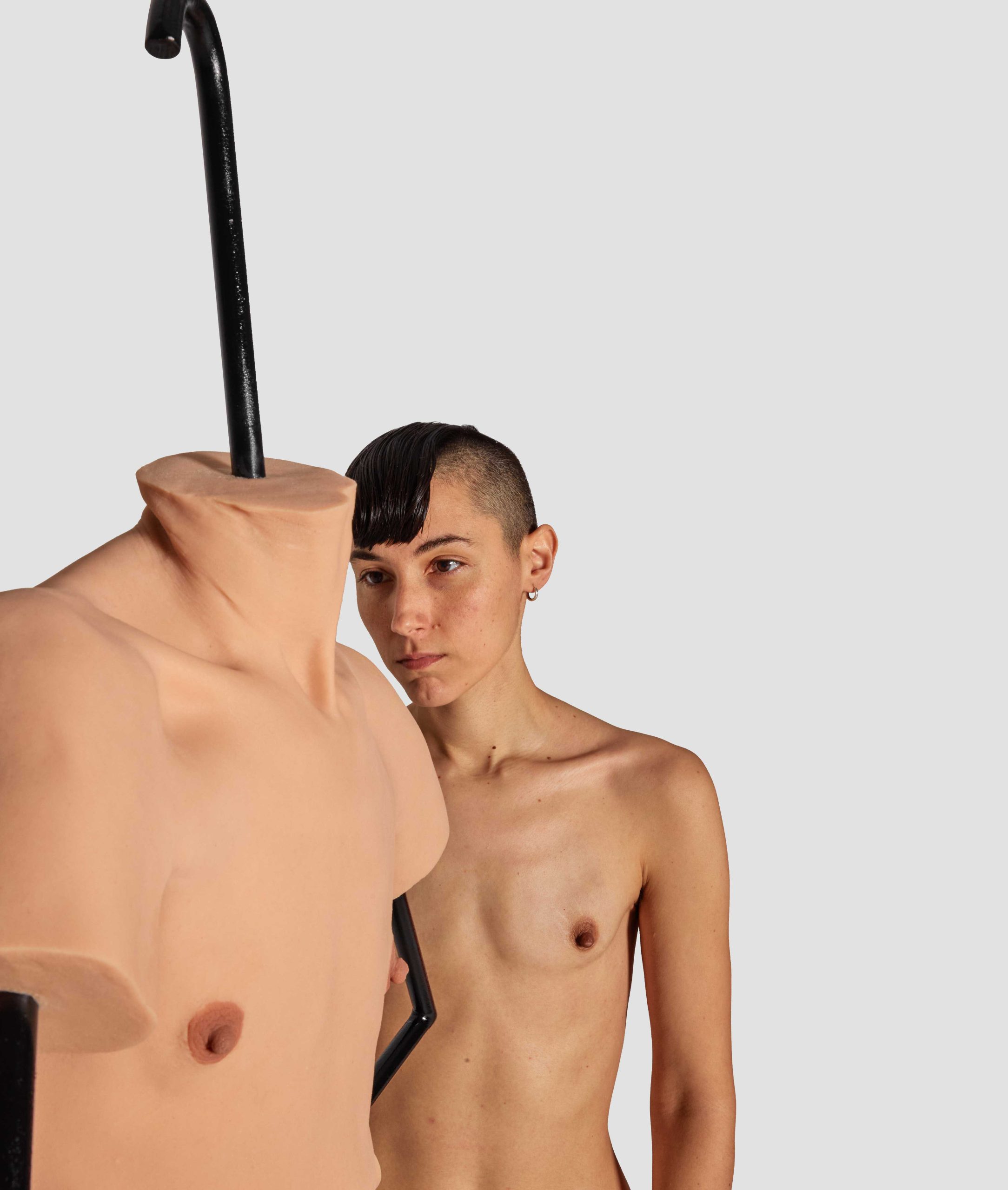It is no secret that the highstreet has been slowly dying for quite some time. According to Forbes, 59% of consumers shop online as opposed to venturing out into town. This is no surprise – modern technology has made virtual shopping all the more convenient. AI and AR have been utilized to develop features such as digital changing rooms and personalised experiences – so what lies ahead for the future of the high street? Will the online spaces continue to grow, leaving the highstreet out to dry, or will physical retailers respond, and technologically enhance the in-store experience further?
Virtual Dressing Rooms
The inability to try on clothes before taking the leap is perhaps the biggest downside of online shopping, and is something that physical stores will always have the upper hand on – or will they?
Thanks to AR technology, customers are now able to try on garments from the comfort of their own homes, with the introduction of virtual changing rooms. These can take on a number of forms – some require clients to input their measurements – i.e. height and weight, to see their chosen items on a digital mannequin with a similar body type to their own. Others render virtual clothing over the customers body, in a way not too dissimilar from a Snapchat filter. Your Fit by 3DLOOK has taken over the concept to a new level, as they generate unique 3D avatars based on 86 points of measure provided by the consumer. This is mapped with the chosen brands product data, thus providing a visual fit experience.
It will be interesting to see how these digital dressing rooms will continue to develop and become more realistic as we look towards 2024. Will these digital mannequins begin accounting for factors such as individual weight distribution and personal fit preferences? Additionally, may they delve deeper into the artistic side, considering personal style and vision, allowing consumers to have the ultimate tailored shopping experience?
Personalised Shopping Experience
Personal shopping services have always been around — but due to AI technology, this perk is now extended to all virtual shoppers. Retailers now have a detailed understanding of their individual customers’ preferences and needs, thanks to data collection, as they analyse the consumers past behaviour and purchase history. This allows them to recommend personalised suggestions to the buyers, which has benefits for both the company and the customer. Though in 2024, this is old news, so what new concepts may retailers develop in order to provide an even more seamless experience for online buyers?
They may look towards striking a more emotional connection with buyers, introducing a more human aspect to an otherwise faceless interaction of pop-up recommendations and calls to buy. Perhaps we will see virtual personalities and characters fulfil this customer service role in a bid to make the experience more personable, and feed into human intuition of trusting other seemingly human entities. There is no doubt that the number of data points retailers tap into to extend their analysis and drive sales will only continue to expand, making your shopping experience seem uncannily more tailored.
Screen to Shopping Cart
Everyone has grown accustomed to scrolling through Instagram and seeing our feed littered with tagged products, allowing us to go straight from socials to the store’s website. This feature removes the need to search for a product, which speeds up the whole process and preys on the buyer’s impulse. Could this be taken a step further, into the worlds of streaming services?
Imagine you are bingeing a new Netflix series, and the main character is carrying a bag you HAVE to own. Instead of spending hours trawling the internet trying to locate it, what if you were able to simply tap the screen and be given a link straight to the product you are so desperately after? Product placement in film and TV is nothing new, but a concept like this would intensify the impact of product usage on the screen entirely. There is potential for this to be translated into video games, and they could be leveraged more powerfully to compliment the shopping experience, as avatars and fashion become more seamlessly aligned.
Does The High Street Stand A Chane of Survival In 2024?
The highstreet certainly has some work to do if it’s going to compete with the rapidly developing world of online retail. However, some stores are taking steps in order to technologically enhance the customer’s experience. As early as 2015, Ralph Lauren were installing virtual mirrors into their changing rooms, which with embedded cameras are able to identify the items that consumers are trying out, and offer additional, tailored recommendations. In 2021, H&M trialled a virtual fitting solution in Germany, offering costumes a digital avatar with their exact body measurements, allowing them to try out a 30-piece collection, however, this has not been permanently installed in stores as of 2024.
Could we now be entering into a new era of virtual try on mirrors? ZERO10 developed an AR mirror, which perfectly mimics digital copies of clothes and handbags, allowing in-store customers to virtually try them out. Brands such as Tommy Hilfiger and Coach have utilised this concept in campaigns throughout the past year, suggesting it could be the next big thing in the world of retail.
Or could the future lay in the hands of Apple Vision Pro? This exciting new release from the technological empire allows users to be transported into an augmented reality, and see virtual objects in the real world. This could be translated into the fashion industry, allowing consumers to see life-like versions of products before making the purchase.
So, what more could the highstreet be doing to offer their customers an exciting ,and fresh experience? A Clueless inspired system – as seen in the fashion focused 1995 romcom – could be well received – imagine digitally scrolling through inventory, selecting those items that catch your eye, and having them mechanically in your hand within moments. Park feasibility, this concept is certainly the direction in which we are headed. Or perhaps virtual personal styling services may develop further, suggesting items based on what you are already wearing, as opposed to just what you are purchasing.
There is certainly a long way to go. As of right now, e-commerce rules the industry, and it looks as though it may remain that way. However, there is nothing quite like an in-store experience, especially for those of us that love fashion. Feeling the texture of certain fabrics, testing out the comfort levels, and the social aspect of shopping is something that cannot be replicated digitally. So, should the highstreet develop into something exciting by 2024 standards, it may well preserve itself for a few more years.
Written by Lucy Ashburn GLITCH Magazine Contributor





